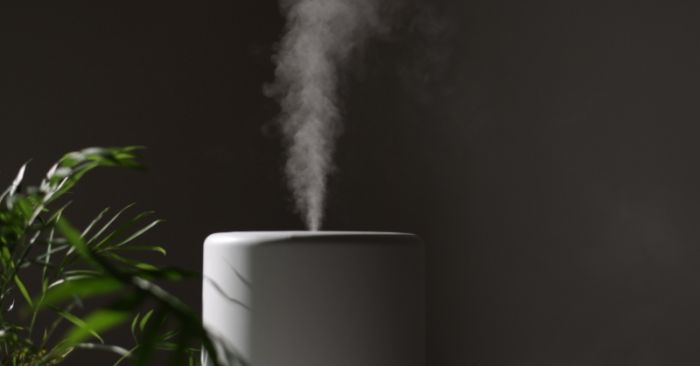When considering the health and safety of a home or business, indoor air quality (IAQ) is a crucial factor that often goes overlooked. Poor IAQ can lead to respiratory issues, allergies, and other health complications. One of the leading causes of deteriorating air quality is water damage. Whether from flooding, burst pipes, or hidden leaks, excess moisture creates the perfect environment for mold growth, bacteria, and other airborne pollutants. Understanding the relationship between water damage and IAQ can help property owners take proactive measures to maintain a safe and healthy indoor environment.
How Water Damage Affects Indoor Air Quality
Water damage introduces moisture into a structure, and when left untreated, it can have serious consequences on the air quality within a building. Here are some key ways water damage impacts IAQ:

1. Mold and Mildew Growth
Mold thrives in damp environments, and once it starts growing, it releases spores into the air. These spores can cause respiratory problems, allergic reactions, and even long-term health conditions in individuals with compromised immune systems. Mold infestations often develop in areas that have experienced water damage, particularly in hidden spaces like walls, ceilings, and flooring.
2. Increased Humidity Levels
Excess moisture in the air leads to high humidity levels, which create an ideal breeding ground for mold, dust mites, and bacteria. Elevated humidity can also cause discomfort, musty odors, and damage to wooden structures and furniture. Proper ventilation and dehumidification are essential to maintaining balanced humidity levels.
3. Bacteria and Contaminant Buildup
Standing water and damp materials become hotspots for bacteria, viruses, and other microorganisms. This is especially concerning in cases of sewage backup, which introduces harmful pathogens into the air. Exposure to airborne contaminants from water damage can lead to infections, respiratory issues, and gastrointestinal problems.
4. Structural Deterioration and VOC Release
Water damage can weaken building materials like drywall, wood, and insulation. As these materials break down, they can release volatile organic compounds (VOCs) into the air. VOCs are harmful chemicals that can cause headaches, dizziness, and irritation to the eyes, nose, and throat. Prolonged exposure may even lead to serious health conditions.
Signs of Poor Indoor Air Quality After Water Damage
Property owners should be vigilant for signs indicating a decline in indoor air quality due to water damage. Some common indicators include:
- Persistent musty odors
- Visible mold growth on walls, ceilings, or floors
- Increased allergy symptoms, such as sneezing, coughing, or watery eyes
- Condensation on windows or walls
- Peeling paint or wallpaper due to excessive moisture
If any of these signs are present, immediate action is necessary to prevent further deterioration and health risks.
Preventing IAQ Issues Related to Water Damage
The best way to maintain good indoor air quality is to prevent and address water damage promptly. Here are some proactive measures:
1. Immediate Water Damage Restoration
Quick response is key when dealing with water damage. Extracting water, drying affected areas, and using dehumidifiers can minimize moisture buildup. Professional water damage restoration companies specialize in these tasks and can ensure that all excess moisture is eliminated.
2. Proper Ventilation and Air Circulation
Ensuring adequate airflow throughout a building helps prevent moisture accumulation. Using exhaust fans, opening windows, and maintaining a well-functioning HVAC system can all improve IAQ by reducing humidity and preventing mold growth.
3. Regular Inspections for Leaks
Undetected leaks in plumbing, roofs, or basements can contribute to water damage over time. Routine inspections can help identify problem areas before they escalate into major issues.
4. Mold Prevention and Remediation
Using mold-resistant materials in construction, promptly addressing leaks, and employing mold remediation techniques can prevent fungal growth. If mold is already present, professional remediation is necessary to ensure safe and thorough removal.
5. Air Filtration and Purification
HEPA air filters and air purifiers can help remove mold spores, bacteria, and other contaminants from indoor air. Regularly changing HVAC filters also contributes to improved air quality.
Professional Water Damage Restoration and IAQ Improvement
Maintaining indoor air quality requires a comprehensive approach to water damage prevention and remediation. Businesses like waterdamageprosraleigh.com specialize in restoring properties affected by water damage while ensuring a safe and healthy environment for occupants. Their services include water extraction, mold remediation, structural drying, and air quality improvement, making them a crucial resource for property owners dealing with water-related issues.
Conclusion
The connection between indoor air quality and water damage is undeniable. Excess moisture leads to mold growth, bacteria buildup, and the release of harmful airborne contaminants, all of which can impact health and property integrity. By addressing water damage promptly, improving ventilation, and investing in professional restoration services, property owners can safeguard their indoor air quality and create a healthier living or working space. Taking proactive measures today can prevent costly damage and long-term health complications in the future.
Post Comment
Be the first to post comment!




